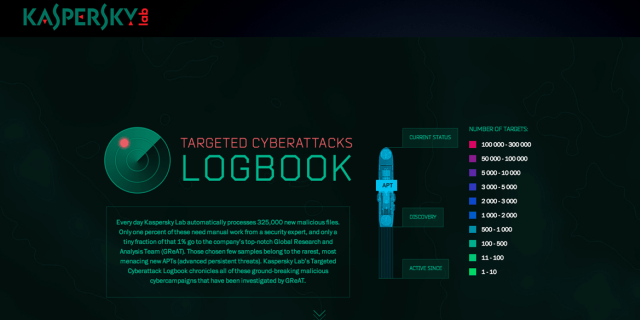
Aware and prepared: IT trends for businesses to consider
It can be hard for businesses to keep in mind everything they need to do to be protected. We have identified five trends in cybersecurity that are affecting businesses, directly or indirectly, at a formidable level.
 Cybersecurity
Cybersecurity




 APT campaigns in 2014
APT campaigns in 2014
 banking trojans
banking trojans


 APTs
APTs
 APT
APT

 cyberattack prevention
cyberattack prevention


